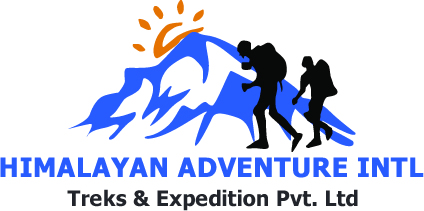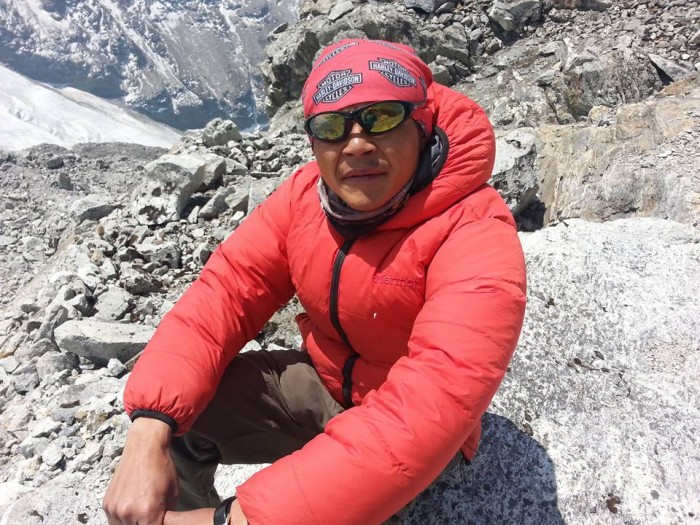Nestled in the heart of the Annapurna region, Pisang Peak (also known as Jong Ri) is one of Nepal’s most alluring trekking peaks. Standing tall at an altitude of 6,091 meters (19,983 feet), Pisang Peak offers an ideal blend of adventure, cultural immersion, and breathtaking alpine scenery. Whether you're an experienced climber or a trekking enthusiast eager for your first Himalayan summit, Pisang Peak climbing is a rewarding experience that showcases the grandeur of the Annapurna region.
In this comprehensive guide from Himalayan Adventure International Treks, we delve deep into the Pisang Peak itinerary, Pisang Peak cost, required permits, altitude challenges, and comparisons with other renowned climbs such as Island Peak and Annapurna I. We also touch upon essential details like the altitude of Upper Pisang, Manang, and Chame—critical acclimatization spots on the way to the summit.
Why Choose Pisang Peak?
Pisang Peak is one of the most accessible and visually captivating trekking peaks in Nepal. It rises above the picturesque village of Upper Pisang and offers panoramic views of Annapurna II, Annapurna IV, Tilicho Peak, and the surrounding peaks of the Manang Valley.
The trail follows a portion of the classic Annapurna Circuit, adding rich cultural flavor and a sense of adventure to the climb. With a technical but achievable summit ridge, Pisang Peak is perfect for novice climbers seeking a challenge and experienced mountaineers looking to acclimatize for higher peaks.
Pisang Peak Itinerary
The Pisang Peak itinerary is designed to allow gradual acclimatization, ensuring climbers are physically and mentally prepared for the final ascent. Here is a standard 18-day itinerary provided by Himalayan Adventure International Treks:
Day 1: Arrival in Kathmandu (1,400m)
Receive a warm welcome at Tribhuvan International Airport, followed by a trip briefing and gear check.
Day 2: Drive from Kathmandu to Besisahar, then to Chame (2,710m)
Drive along scenic landscapes to reach Chame, the district headquarters of Manang.
Day 3: Trek from Chame to Upper Pisang (3,300m)
Pass through dense pine forests and arrive in the charming village of Upper Pisang.
Day 4: Acclimatization in Upper Pisang
Explore the village and adjust to the elevation, with short hikes to nearby monasteries and viewpoints.
Day 5: Trek to Pisang Peak Base Camp (4,380m)
Ascend through yak pastures and alpine terrain to reach base camp.
Day 6: Climb to High Camp (5,200m)
A steep climb prepares you for the summit push. Overnight stay in tents.
Day 7: Summit Day (6,091m) and Return to Base Camp
Begin pre-dawn ascent. The summit offers jaw-dropping views of Annapurna II, Gangapurna, and Tilicho Peak. Descend back to Base Camp after celebration.
Day 8: Extra Day (Contingency for Bad Weather)
A flexible day in case of unfavorable weather or extra acclimatization needs.
Day 9–15: Trek to Manang (3,540m), Thorong La Pass (5,416m), and back to Jomsom via Muktinath
Join the Annapurna Circuit and pass through Manang and Thorong La Pass before descending to Jomsom.
Day 16: Fly to Pokhara
A scenic mountain flight from Jomsom to Pokhara.
Day 17: Drive back to Kathmandu
Day 18: Final Departure
How Difficult is Pisang Peak?
A common question is: "How difficult is Pisang Peak?" The climb is considered moderately technical, especially at the final summit ridge, which is steep and exposed. Prior mountaineering experience is not mandatory but is highly recommended. Basic skills like using crampons, ice axes, and fixed ropes will significantly enhance your experience.
While the ascent does not require advanced rock climbing, the high altitude and rapidly changing weather can pose challenges. Proper acclimatization, physical fitness, and mental resilience are crucial for a successful climb.
Pisang Peak Cost: What's Included?
The Pisang Peak cost depends on the size of the group, the level of service, and customization. On average, prices range from USD 2,200 to USD 2,800 per person for a full-package expedition.
Here’s what the package from Himalayan Adventure International Treks typically includes:
Included:
-
Airport transfers
-
Licensed climbing guide and porters
-
All permits and paperwork
-
Three meals per day during the trek
-
Accommodation in lodges and tents
-
Transportation (private jeep, local bus, or flights)
-
Climbing equipment (shared ropes, harness, etc.)
-
Insurance for staff
Excluded:
-
International flights
-
Personal travel insurance
-
Tips and gratuities
-
Personal climbing gear (boots, down jacket, etc.)
How Much is the Peak Climbing Permit?
To climb Pisang Peak, you’ll need to secure the following permits:
-
Pisang Peak Climbing Permit (via NMA):
-
Annapurna Conservation Area Permit (ACAP): USD 30
-
TIMS (Trekkers Information Management System) Card: USD 20
So, how much is the peak climbing permit? For peak seasons, expect to pay around USD 275–300 total in permits.
Comparing Pisang Peak with Island Peak & Mera Peak
Pisang Peak vs Island Peak
Both Pisang and Island Peak are excellent for first-time climbers, but Island Peak (6,189m) is slightly higher and often combined with the Everest Base Camp trek.
-
Island Peak climbing itinerary: Usually 19–21 days with more glacier travel.
-
Cost to climb Island Peak: USD 2,200 to USD 2,800
-
Pisang Peak involves more rock scrambling, while Island Peak demands glacier navigation with ladders and crevasse crossings.
Pisang Peak vs Mera Peak
Mera Peak (6,476m) is the highest trekking peak in Nepal. It offers a less technical but longer ascent.
-
Offered by Makalu Adventure Mera Peak and other agencies
-
Mera is more isolated and physically demanding due to its length and altitude
-
Pisang Peak is more accessible and culturally rich due to its location on the Annapurna Circuit
How Much Does It Cost to Climb Annapurna I?
While Pisang Peak is a trekking peak, Annapurna I (8,091m) is a full-fledged expedition requiring serious preparation.
Annapurna I is known for its high fatality rate due to avalanches and challenging terrain, making it suitable only for seasoned mountaineers.
Best Season to Climb Pisang Peak
The best time to climb Pisang Peak is during:
-
Spring (March to May): Stable weather and clear skies with blooming rhododendrons
-
Autumn (September to November): Crisp views and moderate temperatures, perfect for summit success
Avoid the monsoon (June to August) and winter (December to February) due to heavy snowfall and avalanche risk.
Why Climb with Himalayan Adventure International Treks?
At Himalayan Adventure International Treks, we believe in crafting unforgettable mountain experiences. Here's why climbers choose us:
-
Experienced guides and Sherpas with certified mountaineering training
-
Customized Pisang Peak itinerary to suit individual fitness and goals
-
Transparent Pisang Peak cost with no hidden fees
-
Community-focused trekking: We partner with locals to boost sustainable tourism in Manang and Pisang
-
Safety-first approach: From proper acclimatization to satellite communication, your safety is our top priority
Essential Tips for Pisang Peak Climbing
-
Train well: Cardiovascular endurance, leg strength, and high-altitude training are key
-
Pack smart: Layered clothing, mountaineering boots, gloves, and UV protection are essentials
-
Acclimatize properly: Don’t skip acclimatization days; altitude sickness is a real risk
-
Hydrate and eat well: Fuel your body with high-calorie meals and plenty of fluids
-
Stay informed: Weather updates and mountain forecasts help in summit planning
Climbing Pisang Peak is an adventure of a lifetime—one that weaves together challenging ascents, cultural richness, and Himalayan beauty. Whether you're comparing it with Island Peak climbing itineraries, Mera Peak from Makalu Adventure, or even contemplating the massive undertaking of Annapurna I, Pisang Peak remains a gateway into the soul of the Annapurnas.
With expert guidance from Himalayan Adventure International Treks, your Pisang Peak expedition is not just a climb—it’s a life-changing journey that pushes boundaries, builds resilience, and fills your heart with awe.
Ready to start your Pisang Peak adventure?
📩 Contact us at info@himalayanadventureintl.com or visit www.himalayanadventureintl.com to learn more and book your expedition today.

 Plan Your Trip Now
Plan Your Trip Now 


